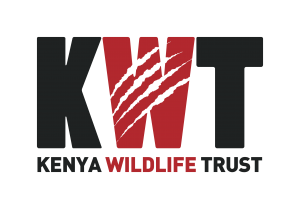Engaging young boys and girls in environmental conservation: Examples from the Greater Mara Ecosystem
Written by Gloria Kosgey,
Eastern Africa including Kenya, Somalia, Ethiopia, and Djibouti is facing one of the most severe droughts in years with a projection of more than 20 million people at the risk of facing acute food and water shortage.
In Masai Mara, southeast Kenya, the average annual seasonal rainfall is about 1298.98mm (figure 1), but this average masks a high level of variability. This can result in either prolonged dry spells that occur after an early onset of rains or extreme flooding occurring after a late-onset (Peter Wangai et al., 2013, p. 4). Affected by this is pasture and range management with gradual reducing river flow or high water stress over the years (Masai Mara challenges of a world unique ecosystem, 2015, p. 23).
UNEP suggests addressing it using tree cover that can contribute to climate change mitigation and soil and water conservation (Status of Desertification and Implementation of the United Nations Plan of Action to Combat Desertification, p. 42). By using trees, livestock keepers can enjoy ecological benefits from controlled soil erosion and reducing the speed of water flow on land. This allows the growth of pasture for their livestock thereby promoting healthy breeds for sustainable household food security.
Unique to this approximately 3000km² area are the big 5, predators alike, ruminants large and small, amphibians, birds, reptiles, plant species, and the Maasai people. A household livelihood survey conducted in early 2022 showed that 86% of the surveyed households in Aitong Maasai mara, practice pastoralism with a focus on farming that is largely rainfed. Implying that with the rise in climate-related risks, households may continue counting losses. With more than 67% of their cattle and shoats feeding on roughages as their preferred main type of feed, last year’s biting drought between October 2021 and January 2022 led to a 5 % decrease in livestock numbers. More cattle than other livestock were lost. This is putting the lives of pastoralists who rely on animals at stake. For these reasons, engaging communities to seek sustainable outcomes as a credible tool for the realization of combating drought is imperative.
Kenya Wildlife Trust’s Mara Predator Conservation Programme is approaching the process in several ways. Across Masai mara, they are bringing indigenous knowledge and sharing climate information to its 9 wildlife club schools made up of 347 members. The aim has been to provide conservation education to future generations through training, information sharing, and advocacy. This is based on the understanding that exposing children to real-time conservation matters engagingly and compellingly will create positive long-term perceptions of conservation as a whole. 65% of these activities are on reforestation, afforestation, and water conservation for ecosystem preservation.
Between 2020 and 2022, MPCP increased its efforts in the provision of the correct information on the current state of the global environment and climate through storytelling- a widely practiced cultural activity that preserves culture and passes on cultural knowledge from one generation to another. This formed the Ole Peenko book series based on works of fiction. As a fundamental technology for building growth and development, 100% of the children have identified with characters within the stories and are emulating their actions.
In adopting a conservation outlook that emphasizes environmental preservation:
- 20 new wildlife members from Olkurroto primary school are now looking at supplying tree seedlings to other wildlife club schools and villages in Masai Mara through the construction of a tree nursery with 10,000 indigenous tree seedlings.
- 3 schools- Mbitin, Molibany, and Ng’osuani primary schools proposed the construction of water tanks to help them take better care of trees planted while reducing time lost going to fetch water across long distances.
Figure 2: The green face of Loigero (left) and Mara hills (right) primary schools following 6 years (2015-2021) of reforestation efforts to reduce soil erosion.
According to the late Nobel peace prize winner Wangari Maathai “You cannot protect the environment unless you empower people, you inform them, and you help them understand that these resources are their own, that they must protect them.” She argues that this can only be achieved if “we shift to a new level of consciousness” giving hope and acting now.
Against this backdrop reiterated by KWT’s MPCP overarching goals contributing to UN SDG’s 13 (climate action) and 15 (life on land), the combination of new technology and traditional communication is helping to disseminate climate information. This has enabled the passionate tree planters and blue innovators to explore effective and sustainable ways to improve water shortages and reduce soil erosion to combat desertification within their schools and surrounding villages using trees.
Through partnerships (SDG 17), sustainable innovative approaches with communities are positively changing lives. It is anticipated and aspired to that more community-centered innovations contribute to helping the vulnerable ecosystems by factoring in the locals’ interests.
Ultimately, the provision of empowering, educative and relatable communication remains a vital key to raising a supportive climate-smart generation that will rise from drought together.
Figure 3: Stories of hope helping any child of any ability to progress and reach the potential to address global environmental issues confidently.
Executive director UNEP. Status of Desertification and Implementation of the United Nations Plan of Action to Combat Desertification.
Peter Wangai, J. K. (2013). International Journal of Ecosystem. Drought Related Impacts on Local People’s Socioeconomic Life and Biodiversity Conservation at Kuku Group Ranch, Southern Kenya, 6.
The Masai Mara science and development initiative, T. M. (2015). Masai Mara challenges the world’s unique ecosystem. Kenya.














